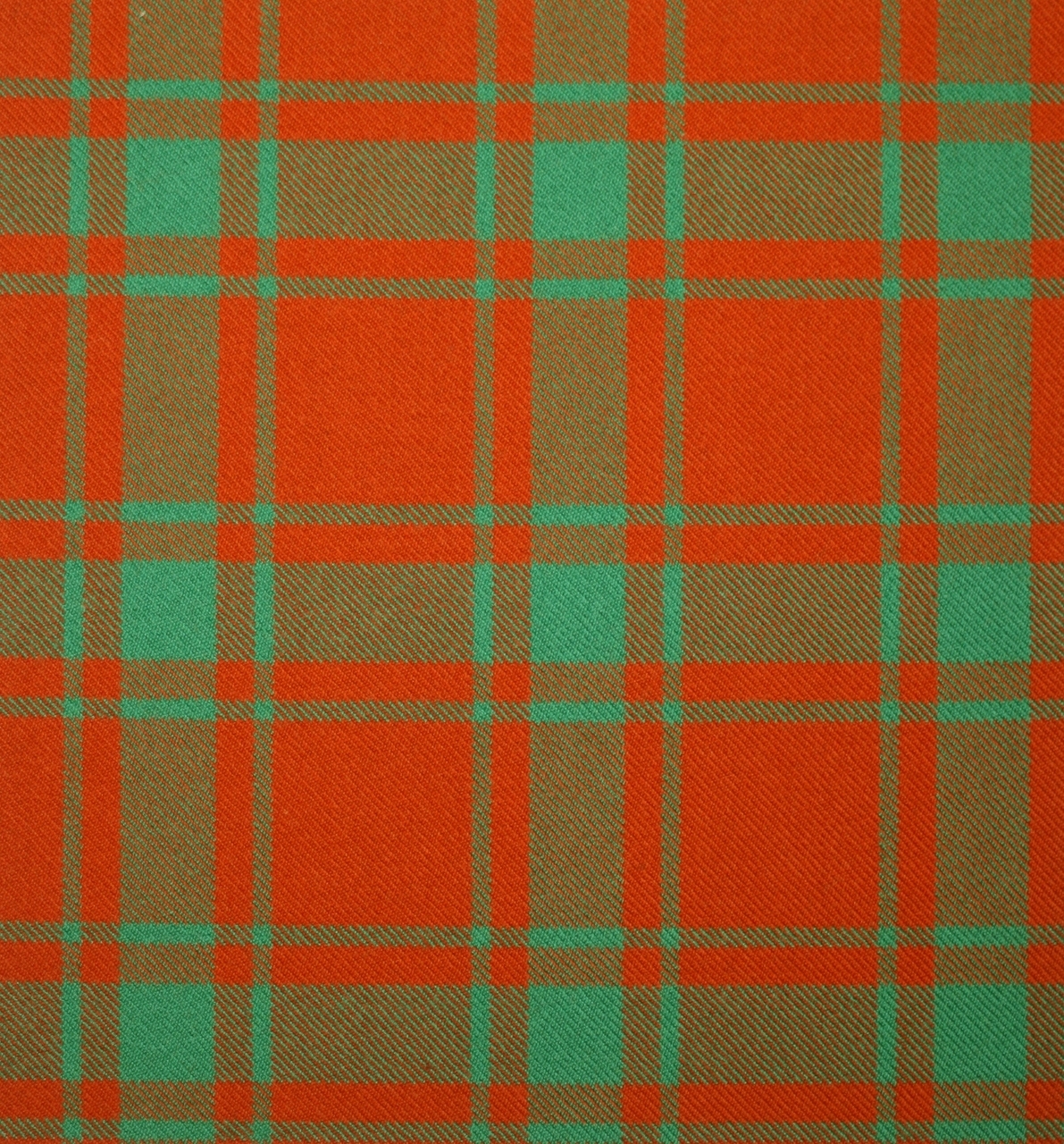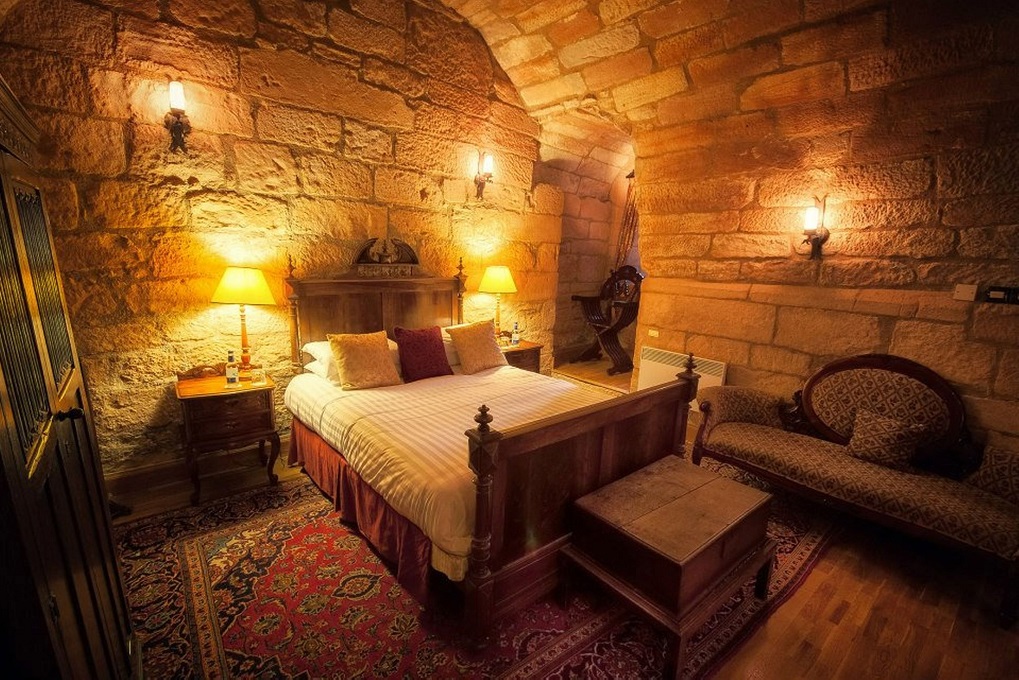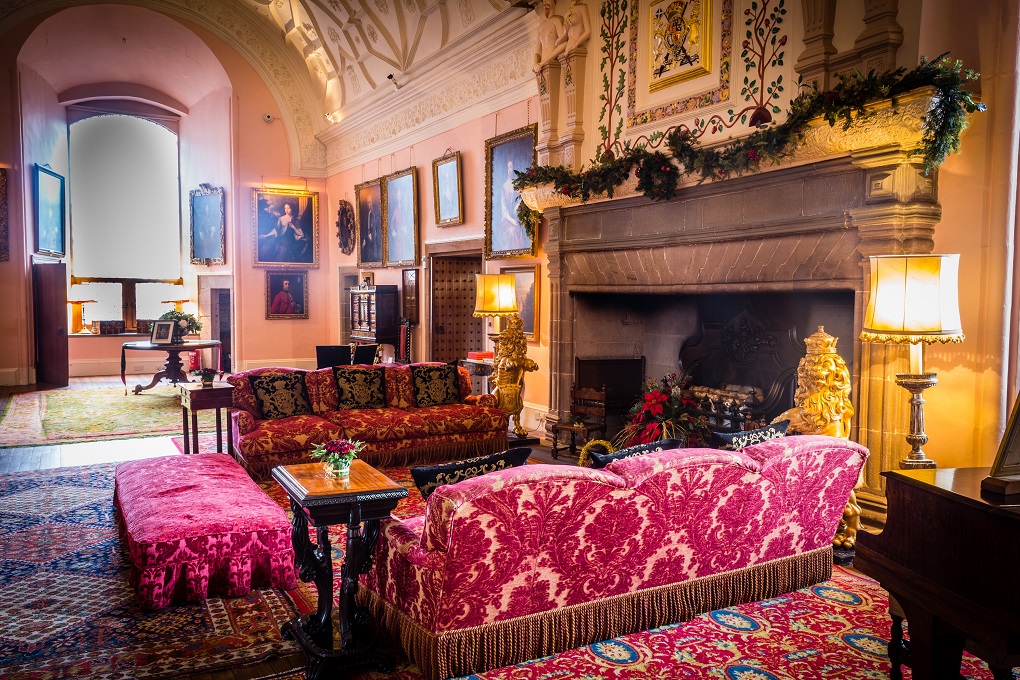Wee History of Scottish Interior Design
Scotland – a land of myth and legend, where dramatic castles stand in contrast to tumbledown crofts, bottomless lochs hold ancient mysteries, and men wear skirts with impunity. If you feel an affinity for Scottish culture, or simply want to add a touch of Celtic charm into your home, you can do so simply and easily by understanding some of the key characteristics that define Scottish interior design. Regardless of whether you introduce only a few small elements of its design into your decor, or go full throttle with a complete theme, your home is sure to benefit from a little Scottish flair. Key to appreciating the design philosophy behind Scottish interior design is understanding its birthplace – Scotland is at once dramatic and peaceful, beautiful, and barren. The often-harsh climate competes with a landscape of rolling hills, glacial peaks, and pristine beaches. Wherever you go, you’re surrounded by the natural world in all its forms. As the Guardian reports, rather than leaving nature at the door, Scottish interior designers have embraced its majestic beauty and brought the outdoors indoors, leading to a design philosophy that’s a celebration of all things natural, rustic, and, most importantly of all, Scottish.
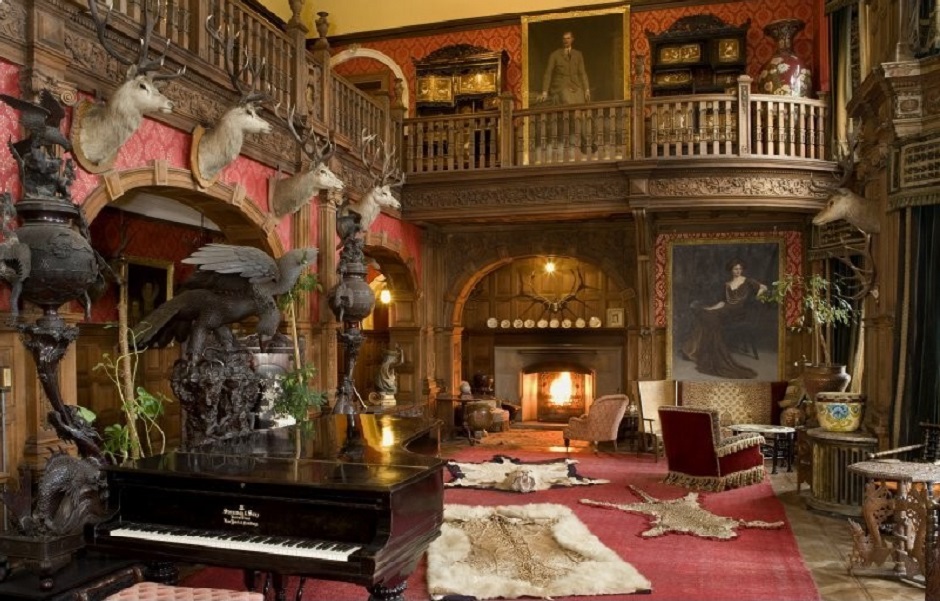
The Essence of Scottish Interior Design – While no two Scottish homes are the same, look hard enough and you’ll find certain commonalities that come together to form an overall picture of Scottish interior design. Scottish decor is influenced by the dual combination of the regional crafts found in the area and the outstanding natural beauty of the nation’s lands. The theatrical and colorful landscape of Scotland’s exterior (think barren moors, dramatic, craggy peaks, hills strewn with heather, and sheep dotted fields) is replicated in its interiors, with the use of natural materials, colorful patterns, and traditional methods doing much to add an essence of the outdoors to the indoors. If you want to inject a touch of Scotland into your house, there are certain key things to consider (fabric, furniture, materials, etc.). Fortunately, Scottish interior design is very versatile- whether your taste runs to the traditional or to the contemporary, understanding the basics of its philosophy will make it easy to incorporate and adapt for any space and style you want.
Frank Gehry, “Architecture should speak of its time and place, but yearn for timelessness.”
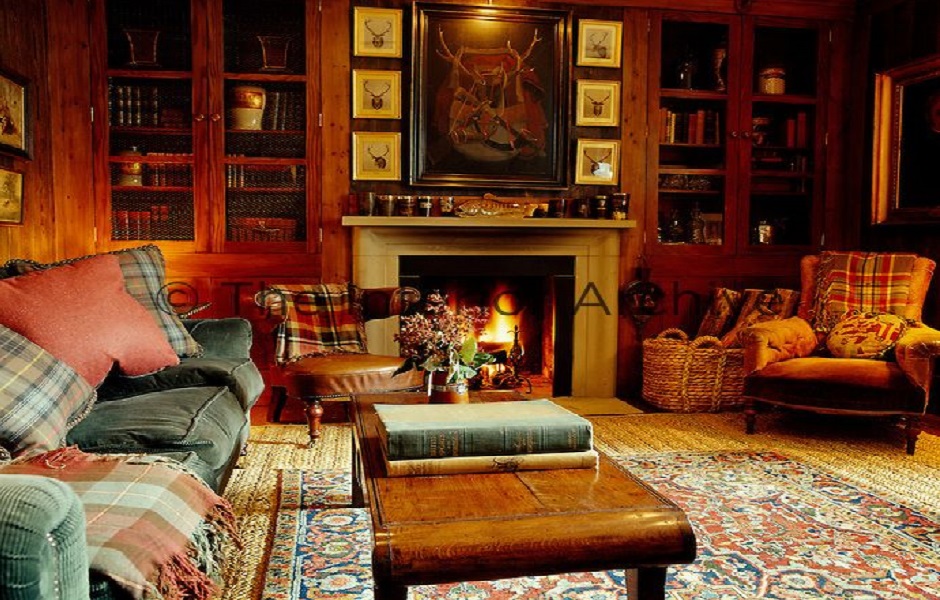
Signature Fabrics – Tartan and tweed have as much of a place in the home as they do in fashion, and the beautiful designs and bold colors of these fabrics will introduce a striking talking point into your home. In its essence, tartan is a crisscrossed pattern of multiple colored horizontal and vertical lines. Up until the mid-19th century, tartan was associated by region rather than by clan, largely because the material was produced by local weavers using only the natural dyes found in that particular district. The patterns used in tartan were chosen by the preferences of the weaver and influenced by the tastes of the local inhabitants.
This changed during the Victorian era when the emergence of artificial dyes and a growing taste among the upper classes to display their Scottish lineage saw certain patterns begin to be associated with specific clans and families. In addition, the growing industrialization of the times allowed tartan to be mass-produced, and for its patterns to be used as much on household objects as it was on clothing, with items such as snuffboxes, jewelry boxes, table linen, accessories, and desk items all being marked with the traditional crisscross design. Since then, tartan has shown no signs of a decline in popularity.
Today, some of the most popular type of tartans include the Royal Stewart Tartan (a red, green and blue colored pattern that is the personal tartan of Queen Elizabeth II) and the Black Watch (sometimes known as old Campbell, Grant Hunting, Universal, or Government) that is used in the dress of several divisions of the British army and features a bold navy and green pattern. Traditionally made from woven wool, tartan can now come in any number of different fabrics and mediums, from the silky to the course, from plastic to paper, from wall coverings to rugs. The wide variety of tartans available makes it easy to incorporate into your home, regardless of whether you want to use it as a singular accent or go for a full-throttled, tartan-inspired theme. In some traditional houses, tartan wallpaper is used to give a dramatic statement of Scottish heritage, while in others, the use of the material is more muted, and is used to add just touch of highland charm via accent cushions, table cloths, kitchen cloths, or small throw rugs.
A Muted Color Scheme – When it comes to choosing your overall color scheme, it’s important to remember that the overriding characteristic of Scottish interior design is the idea of bringing the outdoors inside. Scotland’s countryside is a muted landscape of delicate heathers, soft greens, neutrals, and greys- by keeping to these key shades, you’ll create the ideal backdrop to then accent with the bolder colors of the tartan and tweed accessories you can use to add some spice to your decor. As Amor Cashmere Tweeds notes, not only will mixing the neutral color palette with the striking rainbow effect of the tartan provide a great contrast, it’ll also emphasize the Scottish design element without forcing you to go overboard (unless you want to, of course).

Rustic Furniture – When it comes to furniture, Scottish interior design draws inspiration from the abundant natural resources available in Scotland. Oak and pine are both to be found in profusion in the forests of Scotland, and, naturally enough, in the homes of the country’s occupants. Scottish interior design embraces the natural splendor of the raw materials to incorporate beautiful pieces of furniture into the home, with each piece designed to perfectly complement the natural earthiness of the décor. Upholstered furniture is usually made from materials featuring a check, tweed, or tartan design, that offsets the wooden pieces perfectly by adding a rich, tonal contrast. Simplicity and functionality are key when it comes to furniture: to stay true to the scheme, avoid anything overly elaborate or that prizes beauty over utility. Picture a wooden rocking chair made from polished pine beside the fire, with a throw in a rich tartan or warm merino wool draped over its arm, and you’ll understand the hallmarks of the type of furniture to be found in a Scottish home.
Natural Flooring – Flooring can make or break a room, and it’s vital to get the right kind if you want to stay true to your theme. Here again, we see the outdoors being injected into the indoors, with the natural beauty of nature reflecting in the rich tones and textures of the flooring materials typically used in Scottish design. With timber being one of Scotland’s major resources, wood flooring is generally used throughout the main body of the house. To add warmth, soft sheepskin rugs made from locally farmed animals are usually scattered in the dining and living areas. Meanwhile, the floors of the bathroom and kitchen areas will typically be made from local stone. Caithness slate is a prime example of the type of material used. Found only in the very far north of Scotland, the unique material is one of the most adaptable slates available, offering an attractive, durable flooring finely ingrained with a dark grey color. The natural tones and raw earthiness that these materials bring to the home perfectly complement the overall theme, while the neutral canvas fits seamlessly with both contemporary and traditional spaces.
A Blank Canvas – When it comes to choosing the color of your walls, remember the muted color scheme that’s integral to Scottish interior design. A pallet of soft greys and neutrals will reflect the natural tones of the Scottish landscape and work well against the bold patterns and colors of the tartans and tweeds you can introduce elsewhere. That’s not to say you must avoid drama on your walls entirely. If you feel that your room is up to the challenge of a feature wall, you’re free to add some interest by adding a tartan patterned wallpaper, or even some natural motifs. Walls made from wood paneling (go for oak or pine if possible) also work well and are the perfect complement to the traditional wooden furniture and natural flooring found in Scottish inspired homes.
Soft Furnishings – If you want to add a traditional Scottish element to your home, a judicious application of soft furnishings will allow you to do it simply and easily. Introducing curtains, cushions, and throws to your interior can help turn your house into a home, and thankfully, the neutral color scheme of traditional Scottish interior design provides the perfect base to add some drama with bold contrasting colors and textures. If you want to go for a full Scottish theme, you can add as many striking, Celtic inspired touches as you or your home can handle. If you want a more muted effect, a few simple cushions in an arresting tartan will be all that’s needed to highlight the theme without going overboard. Soft furnishings are also where you get to demonstrate your own creativity and style; with there being so many different options and combinations of affects you can choose from; you can really let your imagination go wild. Well, to a degree, at least – while the quantity and type of soft furnishings you introduce are down to personal preference, it’s still important to remember the overriding characteristics of Scottish interior design. Unless you want to risk ruining the overall theme, you’ll need to pay as close attention to these characteristics when it comes to choosing your soft furnishings as you do when it comes to choosing your flooring and color scheme. Harris tweed and tartans make the ideal choice of material for soft furnishings and come in enough varieties of colors and fabrics for you to add a personal touch without losing sight of the overall vision. Don’t feel you have to choose only one type of fabric or pattern, however- just as much as these types of materials contrast perfectly with the muted tones of your walls and floors, they also contrast well together. Opt for a different type of tartan on your cushions to the one on your throws for a striking effect- even though the patterns may be strong, they work well together and can be used in combination to add a truly stunning visual effect. Soft furnishings will not only add some color and contrast to your interiors, but they’ll also add some much-needed warmth and homeliness – look for material in woven wool for coziness, and don’t forget the value of a sheepskin rug or two to add some warmth to a bare wood floor.
Art & Decorations – When it comes to artwork, Scottish interior design unsurprisingly lends itself to the natural. Continuing the celebration of nature, Scottish inspired homes tend to feature large paintings displaying the beautiful landscapes to be found around the country. Usually, the paintings will be in oil to reflect the depth and intensity of the depicted scenes. Wooden sculptures also feature heavily, although can vary significantly in their scale and scope. More traditional houses will tend to feature smaller, lifelike renditions of animals and birds, while more contemporary spaces lend themselves to larger, abstract designs that focus on shape and texture to create a central focus point. Deer antlers, animal heads, and wildlife studies are also key elements of Scottish design but be careful not go overboard on such dramatic statements- a few key pieces are all that’s needed to pay homage to the style without the risk of parodying it. As noted by Oka, if you don’t want a real deer head affixed to your wall, a lamp or ornament featuring metal interwinding antlers will create a beautiful, modern focal point while staying true to the overall scheme. Simplicity is integral to the concept of Scottish interior design, as is reflecting the wide-open spaces of the Scottish countryside. While artwork is a great way of adding elements of the highlands to your home, avoid going overboard on accessories: a cluttered effect will detract from the simple, rustic charm that makes this theme so desirable in the first place.
Article Credit: Heather Evans –https://nimvo.com/the-characteristics-that-define-scottish-interior-design/
Photo Credit – Visit Scotland – Borthwick Castle
Photo Credit – Glamis Castle (@GlamisCastle) – Twitter
Photo Credit – Glamis Castle
Photo Credit – The New Criterion
Photo Credit – Pin on Home Sweet Home
Photo Credit – Borthwick Castle

